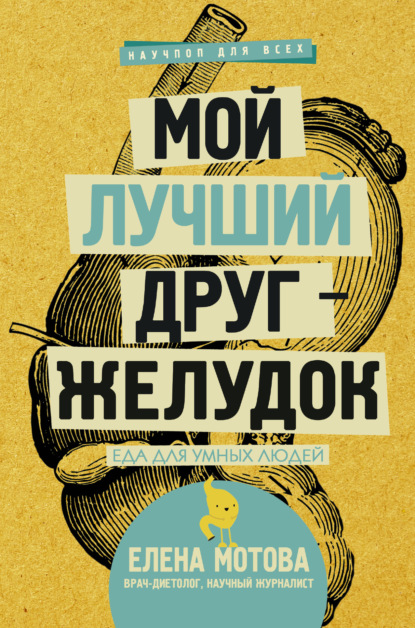По всем вопросам обращайтесь на: info@litportal.ru
(©) 2003-2024.
✖
Мой лучший друг – желудок. Еда для умных людей
Настройки чтения
Размер шрифта
Высота строк
Поля
Глава 5. Еда и движение
5.1
1. Хоули, Э., Дон Френке, Б. Руководство инструктора оздоровительного фитнеса. / Эдвард Т. Хоули, Б. Дон Френке; пер. с англ. Аллы
Ященко и Виталия Левицкого. – Киев: Олимпийская литература, (2004).
2. Столов, И. И. Спортивный резерв: состояние, проблемы, пути решения (организационный компонент): монография. – М.: Советский спорт, (2008).
3. Morris, J., Heady, J., Raf e, P. et al. (1953). Coronary heart-disease and physical activity of work. T e Lancet, 262(6795), pp.1053–1057.
4. Lee, C., Blair, S. and Jackson, A. (1999). Cardiorespiratory f tness, body composition, and all-cause and cardiovascular disease mortality in men. T e American Journal of Clinical Nutrition, 69(3), pp.373–380.
5. Manders, R., van Dijk, J. and van Loon, L. (2010). Low-intensity exercise reduces the prevalence of hyperglycemia in type 2 diabetes. Medicine & Science in Sports & Exercise, 42(2), pp.219–225.
6. Rector, R., Rogers, R., Ruebel, M. et al. (2009). Lean body mass and weight-bearing activity in the prediction of bone mineral density in physically active men. Journal of Strength and Conditioning Research, 23(2), pp.427–435.
7. Romeo, J., W?rnberg, J., Pozo, T. et al. (2010). Physical activity, immunity and infection. Proceedings of the Nutrition Society, 69(03), pp.390–399.
8. Брошюра Мирового фонда исследования рака доступна по ссылке: http://www.wcrf.org/sites/default/fles/CUP-Summary-Report.pdf (http://www.wcrf.org/sites/default/fles/CUP-Summary-Report.pdf).
9. Sieverdes, J., Ray, B., Sui, X. et al. (2012). Association between leisure-time physical activity and depressive symptoms in men. Medicine & Science in Sports & Exercise, 44(2), pp.260–265.
10. Eriksson, P., Perf lieva, E., Bj?rk-Eriksson, T. et al. (1998). Neurogenesis in the adult human hippocampus. Nature Medicine, 4(11), pp.1313–1317.
11. Bherer, L., Erickson, K. and Liu-Ambrose, T. (2013). A review of the ef ects of physical activity and exercise on cognitive and brain functions in older adults. Journal of Aging Research, 2013, pp.1–8.
12. Erickson, K., Voss, M., Prakash, R. et al. (2011). Exercise training increases size of hippocampus and improves memory. Proceedings of the National Academy of Sciences, 108(7), pp.3017–3022.
13. Lautenschlager, N., Cox, K., Flicker, L. et al. (2008). Ef ect of physical activity on cognitive function in older adults at risk for Alzheimer disease. Journal of the American Medical Association, 300(9), pp.1027–1037.
14. Bostr?m, P. , Wu, J., Jedrychowski, M. et al. (2012). A PGC1-?-dependent myokine that drives brown-fat-like development of white fat and thermogenesis. Nature, 481(7382), pp.463–468.
15. Полемика об исследованиях иризина доступна по ссылке: http://www.the-scientist.com/?articles.view/articleNo/43738/title/Irisin-Redeemed/ (http://www.the-scientist.com/?articles.view/articleNo/43738/title/Irisin-Redeemed/).
5.2
16. Руненко, С. Д. Врачебный контроль в фитнесе: монография / С. Д. Руненко. – М.: Советский спорт, (2009).
17. Коваленко, В. Н., Жариков, Л. И. Методика врачебно-педагогических наблюдений. – Мн., (1969).
18. ACSM’s guidelines for exercise testing and prescription. (2013). 9th ed. [Place of publication not identif ed]: Lippincott Williams & Wilkins.
5.3
19. Kirk, E., Donnelly, J., Smith, B. et al. (2009). Minimal resistance training improves daily energy expenditure and fat oxidation. Medicine & Science in Sports & Exercise, 41(5), pp.1122–1129.
20. Garber, C., Blissmer, B., Deschenes, M. et al. (2011). Quantity and quality of exercise for developing and maintaining cardiorespiratory, musculoskeletal, and neuromotor f tness in apparently healthy adults. Medicine & Science in Sports & Exercise, 43(7), pp.1334–1359.
21. Bravata, D., Smith-Spangler, C., Sundaram, V. et al. (2007). Using pedometers to increase physical activity and improve health. JAMA, 298(19), pp.2296–2304.
22. Stevens, J., Truesdale, K., McClain, J. and Cai, J. (2006). T e def nition of weight maintenance. International Journal of Obesity, 30(3), pp.391–399.
23. Jakicic, J., Clark, K., Coleman, E. (2001). Appropriate intervention strategies for weight loss and prevention of weight regain for adults. Medicine & Science in Sports & Exercise, 33(12), pp.2145–2156.
24. Bergstr?m, J., Hermansen, L., Hultman, E. et al. (1967). Diet, muscle glycogen and physical performance. Acta Physiologica Scandinavica, 71(2–3), pp.140–150.
5.4
25. О физической инертности как проблеме общественного здравоохранения можно прочитать на сайте ВОЗ по ссылке: http://www.who.int/dietphysicalactivity/factsheet_inactivity/ru/ (http://www.who.int/dietphysicalactivity/factsheet_inactivity/ru/).
5.5
26. McArdle, W. (2010). Exercise physiology: nutrition, energy, and human performance. 7th ed. Lippincott Williams & Wilkins.
27. Venner, T. (1638). Via recta ad vitam longam Or, A Plain Philosophical Demonstration, etc. London: Printed by R. Bishop, for Henry Hood.
28. American College of Sports Medicine, American Dietetic Association, and Dietitians of Canada. (2000). Joint Position Statement: nutrition and athletic performance. Medicine & Science in Sports & Exercise, 32(12), pp.2130–2145.
29. Bergstr?m, J., Hermansen, L., Hultman, E. et al. (1967). Diet, muscle glycogen and physical performance. Acta Physiologica Scandinavica, 71(2–3), pp.140–150.
30. T omas, D., Erdman, K. and Burke, L. (2016). Position of the Academy of Nutrition and Dietetics, Dietitians of Canada, and the American College of Sports Medicine: Nutrition and athletic performance. Journal of the Academy of Nutrition and Dietetics, 116(3), pp.501–528.
Глава 6. Из чего сделана еда?
6.2
1. Подробнее об иерархии научных доказательств можно прочесть на сайте T e Logic of Science по ссылке:
https://thelogicofscience.com/2016/01/12/the-hierarchy-of-evidence-is-the-studys-design-robust/ (https://thelogicofscience.com/2016/01/12/the-hierarchy-of-evidence-is-the-studys-design-robust/).
2. Лекция о доказательной медицине, клинических исследованиях и эффекте плацебо доктора медицинских наук Е. Я. Парнеса доступна по ссылке: http://polit.ru/article/2013/09/13/parnes/ (http://polit.ru/article/2013/09/13/parnes/).
3. О том, как искать медицинскую информацию в Интернете, можно прочитать по ссылке: http://medportal.ru/mednovosti/main/2014/10/20/473trusted-source/ (http://medportal.ru/mednovosti/main/2014/10/20/473trusted-source/).
4. Balshem, H., Helfand, M., Sch?nemann, H. et al. (2011). GR ADE guidelines: 3. Rating the quality of evidence. Journal of Clinical Epidemiology, 64(4), pp.401–406.
5. Sesso, H., Buring, J. and Christen, W. (2008). Vitamins E and C in the prevention of cardiovascular disease in men. JAMA, 300(18), pp.2123–2133.
6. Gaziano, J., Glynn, R., Christen, W. et al. (2009). Vitamins E and C in the prevention of prostate and total cancer in men. JAMA, 301(1), pp.52–62.
7. Druesne-Pecollo, N., Latino-Martel, P. , Norat, T. еt. al. (2010). Beta-carotene supplementation and cancer risk: A systematic review and metaanalysis of randomized controlled trials. International Journal of Cancer, 127(1), pp.172–184.
6.3
8. Joint FAO/WHO/UNU expert consultation. (2007). Protein and amino acid requirements in human nutrition: report. World Health Organization.
9. Foster, G., Wyatt, H., Hill, J. et al. (2003). A randomized trial of a low-carbohydrate diet for obesity. New England Journal of Medicine, 348(21), pp.2082–2090.








